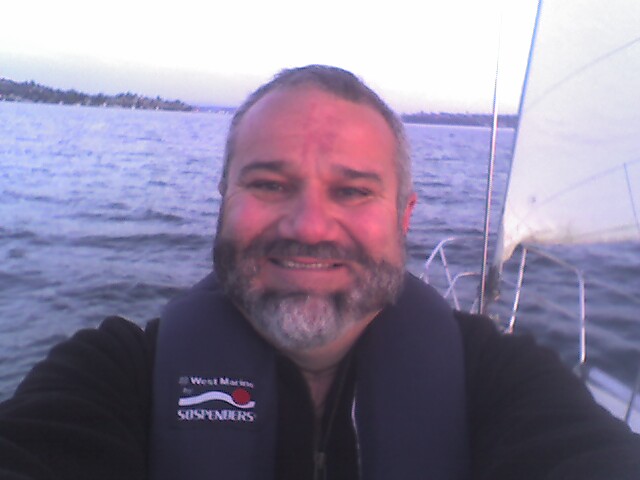Rigger's Apprentice
He was spewing information much faster than I could take notes - touching everything and recounting experiences with this or that piece of gear, pointing out how this could be re-routed slightly for easier use, noticing that this or that part has been recalled by the manufacturer and could be replaced for free, on and on.
Much to my delight he did spend a fair amount of time pointing out and admiring C&C's engineering and build quality. I wish I could have plied him with whisky and tobacco and kept him there all day.
He didn't go up the mast nor did he disassemble anything. He did look at all fittings accessible from the deck including blocks, winches, boom, gooseneck, and the chainplates. I took up the floorboards and he inspected the mast all the way into the bilge and also looked closely at the collar and the step. From the cabin he closely examined the chainplates and the tie-bars.
Re-heading the rod-ends was something he mentioned. I don't have any information if it was ever done before by any previous owner. He observed that there was probably enough space on the turnbuckle screws to allow the existing rods to be re-headed without replacement but he was going to do a quote for both re-heading and replacement. He said that, while racing is hard on the rod, the Pacific Northwest climate is much easier on it than other areas - almost no freezing and plenty of rain to wash the salt out.
He also pointed out that the bronze Navtec turnbuckle screws are pretty resistant to galling. The hull surveyor stated that the screws needed replacement every 10 years but Mr. Toss said that they rarely had problems with the bronze screws. He thought maybe the hull surveyor had experience with the stainless units.
After meeting Mr. Toss I went out and bought his book The Rigger's Apprentice. It is slightly mis-named because it is full of information about how to do most things boating-related The Right Way. It takes over where Hervey Garrett Smith's The Arts of the Sailor leaves off.
Among other things such as the proper procedures for going aloft, it contains a lot of information related to ropes and rope-work. It applies that information to many aspects of boating. It is new enough to cover modern, high-tech lines and is relevant to both racers and cruisers, modern and tradional craft.
It was an honor to have Mr. Toss aboard my boat. He deserves his good reputation, respect, and is a nice guy.

